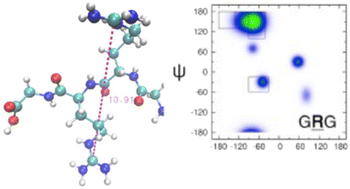The relevance of short peptides for an understanding of unfolded and intrinsically disordered proteins
Abstract
Over the last thirty years the unfolded state of proteins has attracted considerable interest owing to the discovery of intrinsically disordered proteins which perform a plethora of functions despite resembling unfolded proteins to a significant extent. Research on both, unfolded and disordered proteins has revealed that their conformational properties can deviate locally from random coil behavior. In this context results from work on short oligopeptides suggest that individual amino acid residues sample the sterically allowed fraction of the Ramachandran plot to a different extent. Alanine has been found to exhibit a peculiarity in that it has a very high propensity for adopting polyproline II like conformations. This Perspectives article reviews work on short peptides aimed at exploring the Ramachandran distributions of amino acid residues in different contexts with experimental and computational means. Based on the thus provided overview the article discussed to what extent short peptides can serve as tools for exploring unfolded and disordered proteins and as benchmarks for the development of a molecular dynamics force field.

- This article is part of the themed collections: 2023 PCCP HOT Articles and 2023 PCCP Reviews


 Please wait while we load your content...
Please wait while we load your content...